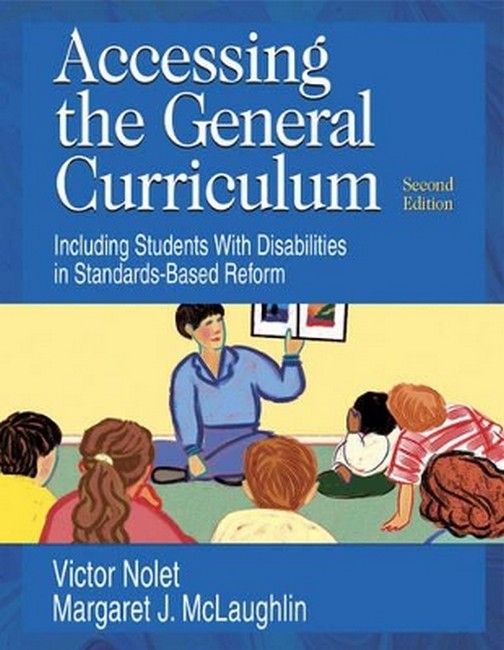Victor W. Nolet is Director of Assessment and Evaluation for the Woodring College of Education at Western Washington University. He received his Ph.D. from the University of Oregon. His current interests include the impact of teacher education programs on P-12 student outcomes and the impact of accountability systems on students with disabilities. Address: Victor Nolet, Woodring College of Education, 251F Miller Hall, Western Washington University, Bellingham, WA. 98225. Margaret McLaughlin has been involved in special education all of her professional career, beginning as a teacher of students with serious emotional and behavior disorders. Currently she is the associate director of the Institute for the Study of Exceptional Children, a research institute within the College of Education at the University of Maryland. She directs several national projects investigating educational reform and students with disabilities, including the national Educational Policy Reform Research Institute (EPRRI), a consortium involving the University Maryland; The National Center on Educational Outcomes (NCEO); and the Urban Special Education Collaborative. She also directs a national research project investigating special education in charter schools and leads a policy leadership doctoral and postdoctoral program in conducting large-scale research in special education. McLaughlin has worked in Bosnia, Nicaragua, and Guatemala in developing programs for students with developmental disabilities. She has consulted with numerous state departments of education and local education agencies on issues related to students with disabilities and the impact of standards-driven reform policies. McLaughlin co-chaired the National Academy of Sciences Committee on Goals 2000 and Students with Disabilities, which resulted in the report Educating One and All. She was a member of the NAS committee on the disproportionate representation of minority students in special education. McLaughlin teaches graduate courses in disability policy and has written extensively in the area of school reform and students with disabilities. She earned her PhD at the University of Virginia and has held positions at the U.S. Office of Education and the University of Washington.
Request Academic Copy
Please copy the ISBN for submitting review copy form
Description
Introduction Acknowledgments 1. Access to the General Curriculum: Why it is More Important Than Ever Before The IDEA and Access to the General Curriculum The No Child Left Behind Act The Link Between "Standards" and "Curriculum" A New Way to Think About Special Education 2. The Nature of Curriculum Multiple Types of Curriculum The Core Elements of Curriculum What is the Purpose of Curriculum? Curriculum Involves a Domain Curriculum and Time Finding the General Curriculum Chapter Summary 3. The Learning-Teaching Connection Learning Research and Implications for Teaching Help Students Develop Meaningful Patterns of Information Creating Experts Teach to Improve Your Student's Memory Help Students Attend to What You Want Them to Learn Make Effective Use of Practice Make Effective Use of Scaffolding Help Students Manage Their Own Learning Teach for Transfer and Generalization The Learning-Teaching Connection 4. Assessment That Supports Access to the General Curriculum Assessment and Decision-Making What Will Typical Students Be Expected to Do During the Timeframe Addressed by the IEP What is the Student's Present Level of Performance in the General Curriculum? In What Ways is the Student's Disability Impacting Performance? Is the Student Making Progress in the General Education Curriculum? 5. Access to Curriculum and the Individual Education Program Curriculum Access on a Continuum Universal Design for Learning Multiple Means of Representation Accommodations Modifications Accommodations and Modifications and Assessment Special Education and Related Services 6. A Decision-Making Process for Creating IEPs That Lead to Curriculum Access Step 1: Instructional Assessment Step 2: Choosing the Standards and Identifying Supports Step 3: Creating IEP Goals, Objectives, and Benchmarks The Relationship Between Objectives and Benchmarks References Index
"Offers suggestions on how educators can provide all learners with the opportunity to meet standards through accommodating, modifying, and/or implementing alternative achievement goals." -- Curriculum Connections, Spring 2006

